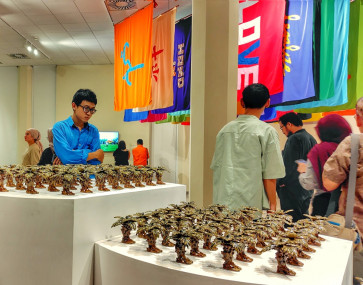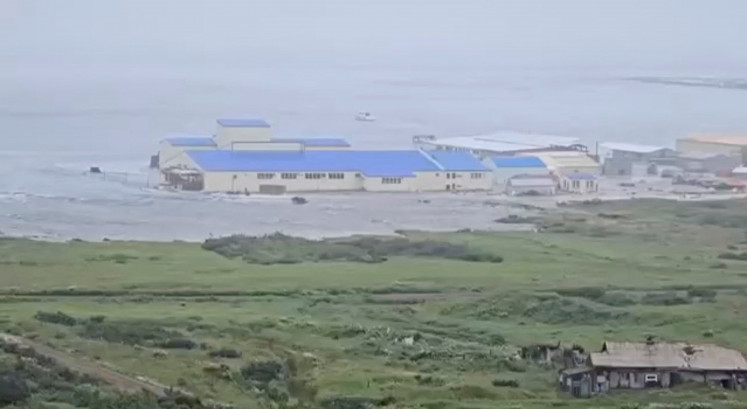Popular Reads
Top Results
Can't find what you're looking for?
View all search resultsPopular Reads
Top Results
Can't find what you're looking for?
View all search resultsBaluran: The Little Africa of Java
Heads up, grave display: Javan bull skulls on display in Baluran National Park, Situbondo, East Java
Change text size
Gift Premium Articles
to Anyone
Heads up, grave display: Javan bull skulls on display in Baluran National Park, Situbondo, East Java.
Apart from its fame in Africa and Central America, Baluran National Park, Situbondo, East Java, is one of the five most beautiful savannas in Indonesia. No wonder, Baluran is also known as The Little Africa of Java.
The piercing sound of macaques (Macaca fascicularis) from the lush foliage of widoro bukol (Ziziphus rotundifolia) broke the silence of the evening, signaling a greeting and at the same time a warning of the arrival of strangers. The sound of falling twigs and rustling leaves could be heard a meter away.
After paying admission fees of Rp 6,000 (6 US cents) per car and Rp 2,500 per person, cellular networks signals start to fade away as the travelers ride in slowly and enter the zone of Baluran National Park.
A 30-minute ride from the gate of the national park passing through a stony and undulating road took the group to Wisma Bekol, a place frequently used by bird watchers for camping.
Some 253 kilometers (km) from Surabaya, Baluran National Park is easily accessible by land because it is located near the northern coastal route of East Java, in Banyuputih district, Situbondo regency, bordering Banyuwangi.
But today, with the operation of Blimbingari Airport in Banyuwangi, tourists can choose to travel by air. From the airport in Banyuwangi, it takes only 45 minutes to Baluran.
Calm before the swarm: Bama Beach, one of the beaches in the zone of Baluran National Park where tourists flock to enjoy sunrise and an underwater panorama by diving and snorkeling.
Of the 25.000-hectare area of Baluran National Park, 40 percent is in the form of a savanna, serving as the habitat of banteng or Javan bulls (Bos javanicus), Timor deer (Cervus timorensis), and wild buffalos (Bubalus bubalis).
The largest part of Baluran's savanna is Bekol, covering 300 hectares. From the gate of the park, visitors need only to travel over a distance of 12 km to reach Bekol. Mount Baluran, 1,247 meters above sea level, soars solidly right before the savanna.
However, the savanna in Baluran, including Bekol, is now threatened with the expansion of acacia (Acacia nilotica). The rapid growth of acacia trees in Baluran has been due to the frequent wildfires in Baluran in the late 1960s. Park authorities initiated the planting of acacia functioning as a barrier to prevent fire from spreading.
The shrinking savanna is followed by its decreasing animal population, particularly Javan bulls. Based on the national park's animal census in 1996, the banteng population was 338. Yet the census of 2012 put the number at only 26. The diminishing grass plain further limits water and food sources for the bulls.
Hide and seek: A deer in Baluran National Park. The changing ecosystem in the park makes this deer species very difficult to find.
Center of attention: A peacock feeds in Bekol, a savanna area of the national park against the background of Mount Baluran, a dormant volcano.
Spotted fowl: A rare red jungle fowl is spotted in Baluran National Park.
One last look: An endangered hornbill flies over Baluran National Park.
' Photos By JP/Indra Harsaputra















